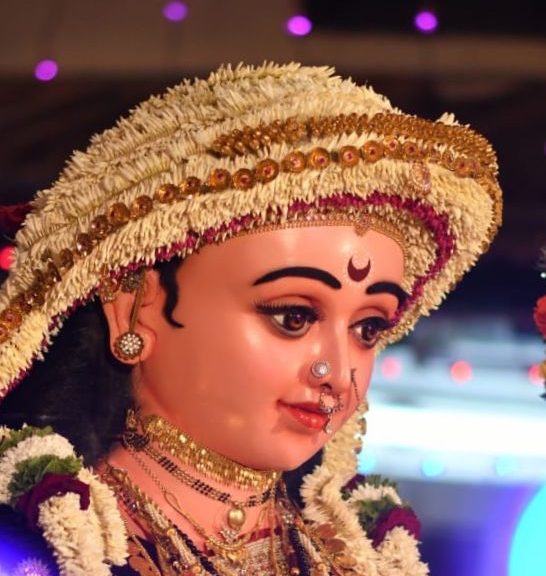Navratri, the festival of nine nights is celebrated across India with great fervor. The nine nights celebrate the Mother Goddess in her various forms, culminating on Vijay Dashami. There are many legends surrounding the festivities; the most prevalent one being that Goddess Durga defeated the demon Mahishasura on this day, the triumph (Vijay) of good over evil.
Amongst the Konkani communities too, Navratri is celebrated with great fervor. Through the nine days, families worship the Goddess, praying for strength, wisdom and prosperity for their family.
Navratri marks the beginning of the paddy harvesting season in Karnataka. On the first day of Navratri the Tandla Madki, the rice pot in the house is cleaned and decked with flowers, preparing to receive the new harvest. The Paddy, kaanas, is also tied to front doors, welcoming the Goddess home. The bringing of new rice is symbolic of continued prosperity for the house.
Suvasini pooja and Kumari pooja are performed by many households during Navratri. While one reveres married women as an embodiment of the Goddess, bestowing her with vhonti and haldi-kumkum; the other honours young girls and includes haldi-kumkum and token gifts for them. Generally, school supplies and small toys are included in the Kumari Pooja gifts.
Days 7 and 8 are dedicated to Goddess Saraswati. Kids and elders in the house place their books and musical instruments in the Pooja room and pray for knowledge, wisdom and success in the coming year. This time is also considered auspicious for Aksharabhyas. Young children are initiated into reading and writing by writing “Om”, “Shree” etc. On a bed of rice.
Day 9 is celebrated as Ayudha Pooja. Ayudha means weapons, but in the modern context has come to imply any tools of your trade. Therefore, everything from laptops and mobile phones to cars and bikes are worshipped on this day. Kids spend the previous evening polishing their bikes and decorating vehicles before the Pooja is a competition in itself!
According to the Mahabharata, the Pandavas hid their weapons in a Shami tree while in incognito for a year. On Navami day they came to retrieve their weapons, and paid obeisance to both weapons and tree before moving forward, hence the celebration of Ayudha pooja on this day.
On Vijay Dashami, the new rice is used in preparing a meal, called Nave Jevan. Shami branches are also exchanged with friends and family on Navami and on Vijay Dashami as a symbol of goodwill with greetings of a Kannada phrase that loosely translates to “May our love and goodwill grow”.
About the author…
Shweta Pai is a Project Manager by day and a new mom. When not mesmerized by her baby boy, she likes to read about food and the stories behind various Konkani traditions.

